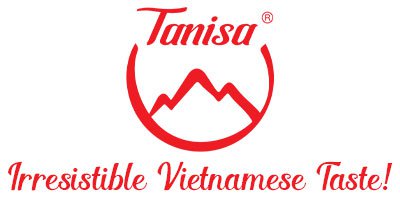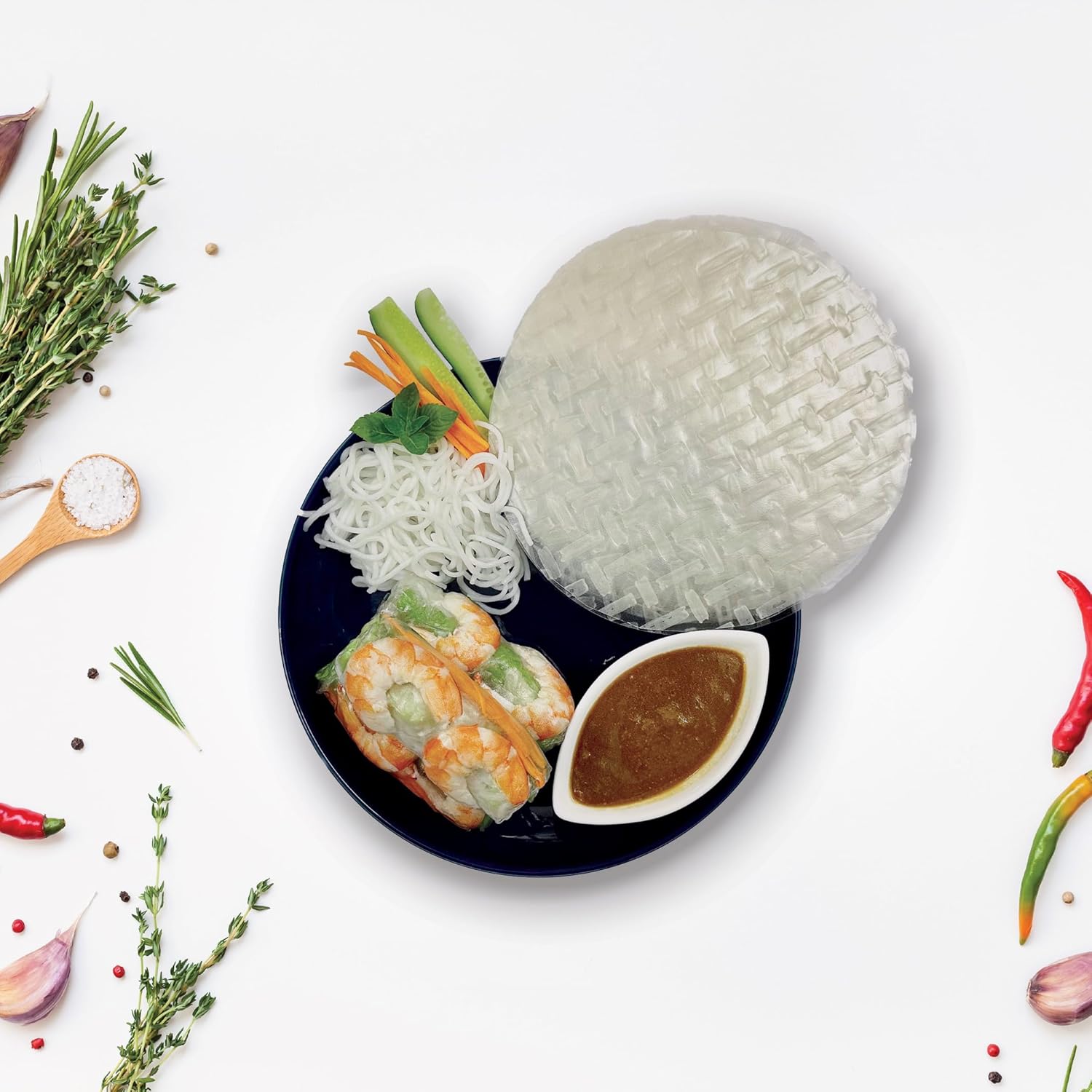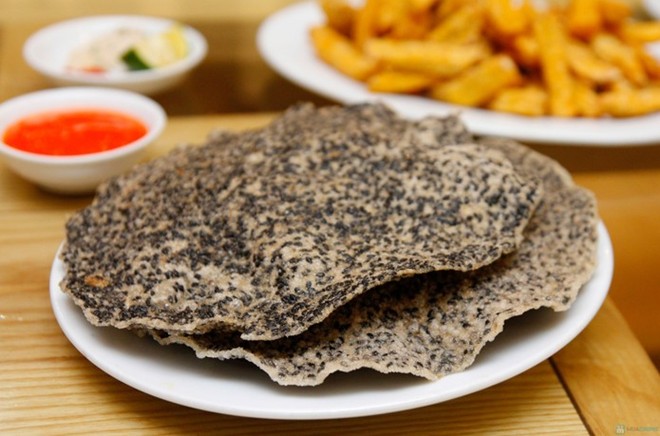Rice Paper – From Its Origins to a World of Flavors
Have you ever wondered where that delicate sheet of rice paper—so familiar in spring rolls, Nem lui, or even the addictive street snack banh trang tron—comes from, and how it has transformed throughout Vietnamese cuisine? Let’s join Tanisa to explore the fascinating journey of this humble yet iconic food!
What is Rice Paper?
Rice paper is a thin sheet made mainly from rice flour, usually sun-dried, and widely used for wrapping Nem (fried spring rolls), fresh spring rolls, or as an ingredient in many beloved snacks.
More than just a staple in family meals, rice paper represents the creativity and diversity of Vietnamese cuisine, from bustling street food stalls to regional specialties celebrated across the country.
Vietnamese rice paper
Origins and History of Rice Paper
Where did rice paper come from?
The journey of rice paper began in Southern Vietnam, where farmers ingeniously transformed fragrant rice grains into a versatile and convenient food.
The Vietnamese word “tráng” describes the method of spreading a thin layer of batter onto a cloth or mold, then sun-drying or baking it. This requires skill and patience to produce perfectly thin, flexible sheets.
Different names across regions
Although popular nationwide, rice paper has different regional names. In Northern Vietnam, people often call it “bánh đa” (due to a taboo against using the name of Lord Trinh Trang). Meanwhile, in Central and Southern Vietnam, the name “bánh tráng” remains widely used.
Ingredients and variations
The base ingredient is rice flour, often mixed with a small portion of tapioca starch to create elasticity. Over time, variations have appeared using corn, mung beans, coconut, sesame, or seasoning with salt, garlic, pepper, sugar, and onion—each giving rice paper its own distinctive flavor.
Famous Villages and Regional Rice Papers
Across Vietnam, many villages are known for their unique rice paper styles:
- Trang Bang Dew-soaked Rice Paper (Tay Ninh): Famous for its soft, pliable texture that doesn’t require dipping in water—essential for the iconic pork rice paper rolls.
- Dai Loc Rice Paper (Quang Nam): Chewy and aromatic, commonly used for fresh rolls.
- My Long Rice Paper (Ben Tre): Infused with coconut aroma, often grilled for a crispy snack.
- Tam Quan Coconut Rice Paper (Binh Dinh): Crispy and rich in coconut milk flavor.
- Plus rice papers from Nha Trang, Kon Tum, Vinh Long, each adding to Vietnam’s rice paper map of flavors.
Types of Rice Paper in Vietnamese Cuisine
Traditional rice papers (by use)
- Spring roll rice paper: The most common, for Nem, fresh rolls, or Bi cuon; softened with water before use.
- Dipping rice paper: Served with hotpot, fermented noodle soup, or dishes with broth/sauce.
- Grilled rice paper: Crispy when grilled, often topped with flavorful fillings.
- Rice paper snack: Pre-seasoned, crunchy, and ready to enjoy as a street snack.
Creative rice paper (by ingredients/region)
- Brown rice paper: Healthy choice for clean eating or diets.
- Vegetable rice paper: Beautiful and nutritious, naturally colored with butterfly pea, beetroot, turmeric, etc.
- Coconut rice paper: Rich and fragrant, from Ben Tre and Binh Dinh.
- Sesame rice paper: Topped with black or white sesame for aroma and crunch.
- Seafood rice paper: With dried shrimp, squid, or anchovy flavors.
- Fruit rice paper: Such as mango, pineapple, or orange from Nha Trang—sweet and tangy.
- Fish-flavored rice papers (Kon Tum): Distinctly savory with dried fish essence.
Trendy Rice Paper Snacks
Vietnamese youth have transformed rice paper into countless creative snacks:
- Banh Trang Tron (Rice Paper Salad): A national street food made with shredded rice paper, kumquat, satay, tamarind sauce, butter, dried beef, shredded chicken, quail eggs, and mango.
- Grilled Rice Paper (“Vietnamese Pizza”): Topped with quail eggs, scallions, dried beef floss, and grilled over charcoal.
- Rolled Rice Paper Snacks: Filled with tamarind sauce, butter, fried shallots, or shrimp floss.
- Rice Paper Skewers (Banh Trang Lui): Rolled tightly with fillings and served with dipping sauce.
- Even modern twists like rice paper tteokbokki or dumplings made with rice paper show its endless versatility!
Tanisa Rice Paper – Elevating Vietnamese Flavors Worldwide
As a pioneer in the rice paper industry, Tanisa continues to innovate, bringing authentic yet modern products to both domestic and global markets:
- Export Rice Papers: Including 22cm spring roll rice paper, 22cm Nem rice paper, 16cm sheets for Korea, and brown rice paper—produced under strict international standards.
- Vegetable Rice Papers: Unique options like butterfly pea, beetroot, turmeric, and brown rice paper—blending tradition with nutrition.
- Rice Paper Snacks: Chili rice paper (square/round) and seaweed rice paper—crunchy, flavorful, and ready-to-eat.
- Tanisa Tay Ninh Rice Paper Salad: A specialty that made our name, with flavors like tamarind, five-spice satay, shrimp satay, vegetarian satay, or shrimp-onion rolls.
Tanisa is proud to deliver rice paper products that preserve Vietnamese tradition while meeting global food safety standards—bringing Vietnamese flavors to the world.
Tanisa rice paper exported for Korean
Conclusion
From a humble creation of daily life, rice paper has traveled a long way to become a colorful culinary symbol of Vietnam. With its diversity of styles, flavors, and uses, rice paper is not only a must-have in every Vietnamese family but also a beloved taste for international food lovers.
Let’s continue exploring and enjoying the wonderful flavors of rice paper with Tanisa—preserving and celebrating the true essence of Vietnamese cuisine.
Would you like to learn more about Tanisa’s specialty rice papers or have any questions about Vietnamese food?
TANISA FOODS JSC, a strong brand in the market for the production and distribution of specialty products (rice paper, rice noodles...) and spices (seasoning) which exported to some countries such as USA, France, South Korea, Japan, Russia, Brunei...
TANISA FOODS JSC
Factory add 1: 188 Lac Long Quan Street, Quarter 3, Tan Ninh Ward, Tay Ninh Province, Vietnam
Factory add 2: Phu Hoa Dong, Cu Chi, Ho Chi Minh City, Viet Nam
Office in HCMC: 18th Floor, Vincom Building, 72 Le Thanh Ton Street, District 1, Ho Chi Minh City, Vietnam
Warehouse in HCMC: 2/3 Binh Gia, Tan Binh District, Ho Chi Minh City, Vietnam
Hotline: +84 938 118 699 (WhatsApp/WeChat), +84 938 198 299 (Zalo)




Email: marketing@tanisagroup.com
Website: www.tanisagroup.com
Facebook: Tanisa Foods JSC
Instagram: Tanisa Kitchen
Youtube: Tanisa Kitchen






Xem thêm